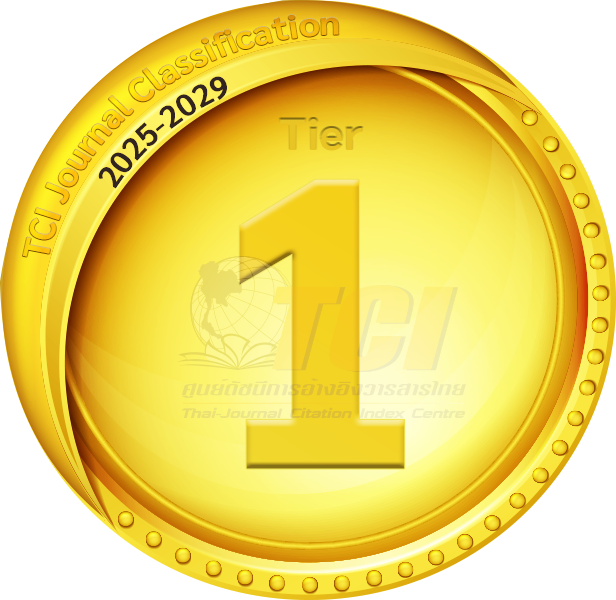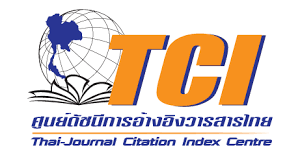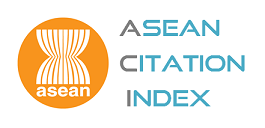Linguistic Landscape of The Legendary Century-old Bangkok Railway Station
- Piyarat Pipattarasakul, Faculty of Liberal Arts, Rajamangala University of Technology Krungthep, Bangkok, Thailand, Email: piyarat.p@mail.rmutk.ac.th
Abstract
Linguistic landscape (LL) has been gaining ground because of an interest in multilingualism and globalization tendencies where languages interact in establishing a global environment. Studies of LL help improve images and services provided by the government and commercial organizations. In line with this, this paper proposes a computerized method of examining the linguistic landscape of the Bangkok Railway Station, known as Hua Lamphong Railway Station, in terms of language use and functions. Moreover, a top-down and bottom-up approach was used to analyze the organizations that created the signs. A total of 314 signs were collected and their contents were stored in a database. Then, the Query by Example (QBE) approach was applied to generate information based on the languages on the signs and their categories. The results showed that the following seven foreign languages were found: English, Chinese, French, Japanese, Burmese, Bahasa Melayu, and Yawee. Thai was the most predominant language used in this station, and English was the foreign language that was mostly used to help create a global environment. The signs were used for providing general information, giving direction, advertising, preventing diseases, prohibition, warning, conveying greetings, and welfare messages. Most of the signs were produced by government agencies, followed by companies, and then local shops. The image of the Bangkok Railway Station can be enhanced through cooperation between the public and private sectors and multilingualism should be promoted for more effective communication. Apart from creating a larger scale research opportunity, our proposed method could efficiently provide insights into linguistic diversity and the functions of language on signs. Importantly, the results can be applied to improve communication on signs for other railway stations throughout the country.
Keywords: language diversity, language functions, linguistic landscape, Query by Example, railway stations, top-down and bottom-up approach
References
Akindele, D. O. (2011). Linguistic landscapes as public communication: A study of public signage in Gaborone Botswana. International Journal of Linguistics, 3(1), 1-11.
Backhaus, P. (2006). Linguistic landscapes: A comparative study of urban multilingualism in Tokyo. Clevedon, UK; Multilingual Matters Ltd.
Ben-Rafael, E., Shohamy, E., Hasan Amara, M., & Trumper-Hecht, N. (2006). Linguistic landscape as symbolic construction of the public space: The case of Israel. International Journal of Multilingualism, 3(1), 7-30.
Bolton, K. (2012). World Englishes and linguistic landscapes. World Englishes, 31(1), 30-33.
Cenoz, J., & Gorter, D. (2006). Linguistic landscape and minority languages. International Journal of Multilingualism, 3(1), 67-80.
Cenoz, J., & Gorter, D. (2009). Language economy and linguistic landscape. In E. Shohamy & D. Gorter (Ed.), Linguistic landscape: Expanding the scenery (pp. 55-69). London, UK: Routledge.
Chanda, S. S., Hossain, M. A., & Rahman, A. (2018). A case study of linguistic landscaping in Bangladesh: Pabna context. Journal of ELT and Education, 1(1), 11-22.
Chuaychoowong, M. (2019). Linguistic Landscape on Campus: A Case Study of a Thai University, Proceedings of RSU International Research Conference, Prathum Thani, Thailand.
Coulmas, F. (2009). Linguistic landscaping and the seed of the public sphere. In E. Shohamy and D. Gorter (Ed.), Linguistic Landscape: Expanding the Scenery (pp. 13-24). London, UK: Routledge.
De Los Reyes, R. A. (2014). Language of “order”: English in the linguistic landscape of two major train stations in the Philippines. Asian Journal of English Language Studies, 2(1), 24-49.
Foust, E., & Fuggle, S. (Ed.). (2011). Word on the street: Reading, writing and inhabiting public space. London, UK: Institute of Germanic and Romance Studies.
Gorter, D. (Ed.). (2006). Linguistic landscape: A new approach to multilingualism. Clevedon, UK: Multilingual Matters.
Gorter, D. (2013). Linguistic landscapes in a multilingual world. Annual Review of Applied Linguistics, 33, 190-212.
Huebner, T. (2006). Bangkok’s linguistic landscapes: Environmental print, codemixing, and language change. In D. Gorter (Ed.), Linguistic landscape: A new approach to multilingualism (pp. 31-51). Clevedon, UK: Multilingual Matters.
Kachru, B. B. (1986). The alchemy of English: The spread, functions, and models of non-native Englishes. Oxford, UK: Pergamon Institute of English.
Landry, R., & Bourhis, R. (1997). Linguistic landscape and ethnolinguistic vitality: an empirical study. Journal of language and Social Psychology, 16(1), 23-49.
Pavlenko, A. (2010) Linguistic landscape of Kyiv, Ukraine: A diachronic study. In E. Shohamy, E. Ben-Rafael and M. Barni (Eds.), Linguistic landscape in the city (pp. 133-150). Clevedon: Multilingual Matters.
Pikulthong, S. (2011). Languages commercial signs along Phra Arthit Road, Bangkok. Damrong Journal, 10(2), 63-85.
Pennycook, A. (1994). The cultural politics of English as an international language. London, UK: Longman.
Phillipson, R. (2004). English-only Europe?: Challenging language policy. London, UK: Routledge.
Prapobratanakul, C. (2016). Inside the shop names: hybridity, language awareness and globalization in the linguistic landscape of a local commercial neighborhood in Bangkok. Manusya: Journal of Humanities, 19(3), 26-37.
Prasert, K., & Zilli, P. J. (2019). A linguistic landscape analysis of Pattaya, Thailand’s sin city. Discourse and Interaction, 12(1), 75-95.
Rungswang, A. (2018). Linguistic Landscape: Forms functions of signs in Thai community center, Golden Mile Complex, in Singapore. TNI Journal of Business Administration and Languages, 6(1), 35-40.
Rappa, A., & Wee, L. (2006). Language policy and modernity in Southeast Asia (Malaysia, The Philippines, Singapore and Thailand). New York, US: Springer.
Reh, M. (2004). Multilingual writing: A reader-oriented typology – with examples from Lira Municipality (Uganda). International Journal of the Sociology of Language, 30(170), 1-41.
Shohamy, E. & Gorter, D. (2009). Linguistic landscape: Expanding the scenery. London, UK: Routledge.
Singhasiri, W. (2013). Linguistic Landscape in the State Railway Station of Thailand: The Analysis of the Use of Language. Proceedings of ECLL 2013: The Inaugural European Conference on Language Learning “Shifting Paradigms: Informed Responses” (pp. 124-132). Brighton Thistle Hotel, Brighton, UK.
Scollon, R., & Scollon, S. W. (2003). Discourse in place: Language in the material world. London, UK: Routledge.
Sirichareon, A. (2016). Multilingualism in the Linguistic Landscape of the Faculty of Arts, Chulalongkorn University, Thailand . Manusya: Journal of Humanities, 22, 12-24.
Siwina, P., & Prasithrathsint, A. (2020). Multilingual landscapes on Thailand’s borders. Journal of Mekong Societies, 16(1), 112-131.
Smalley, W. A. (1994). Linguistic Diversity and National Unity: Language Ecology in Thailand. Chicago, US: The University of Chicago Press.
Sutthinaraphan, K. (2016). A linguistic landscape study of advertising signage on skytrain. Manusya: Journal of Humanities, 22, 53-71.
Thongtong, T. (2016). A linguistic landscape study of signage on Nimmanhemin road, A Lanna Chiang Mai chill-out street. Manusya: Journal of Humanities, 22, 72-87.
Wiriyachitra, A. (2002). English language teaching and learning in Thailand in this decade. ThaiTESOL Focus, 15(1), 4-9.
Woo, W. S., & Nora Riget, P. (2020). Linguistic landscape in Kuala Lumpur international airport, Malaysia, Journal of Multilingual and Multicultural Development, 1-20. DOI: 10.1080/01434632.2020.1742724

Indexed in


Search